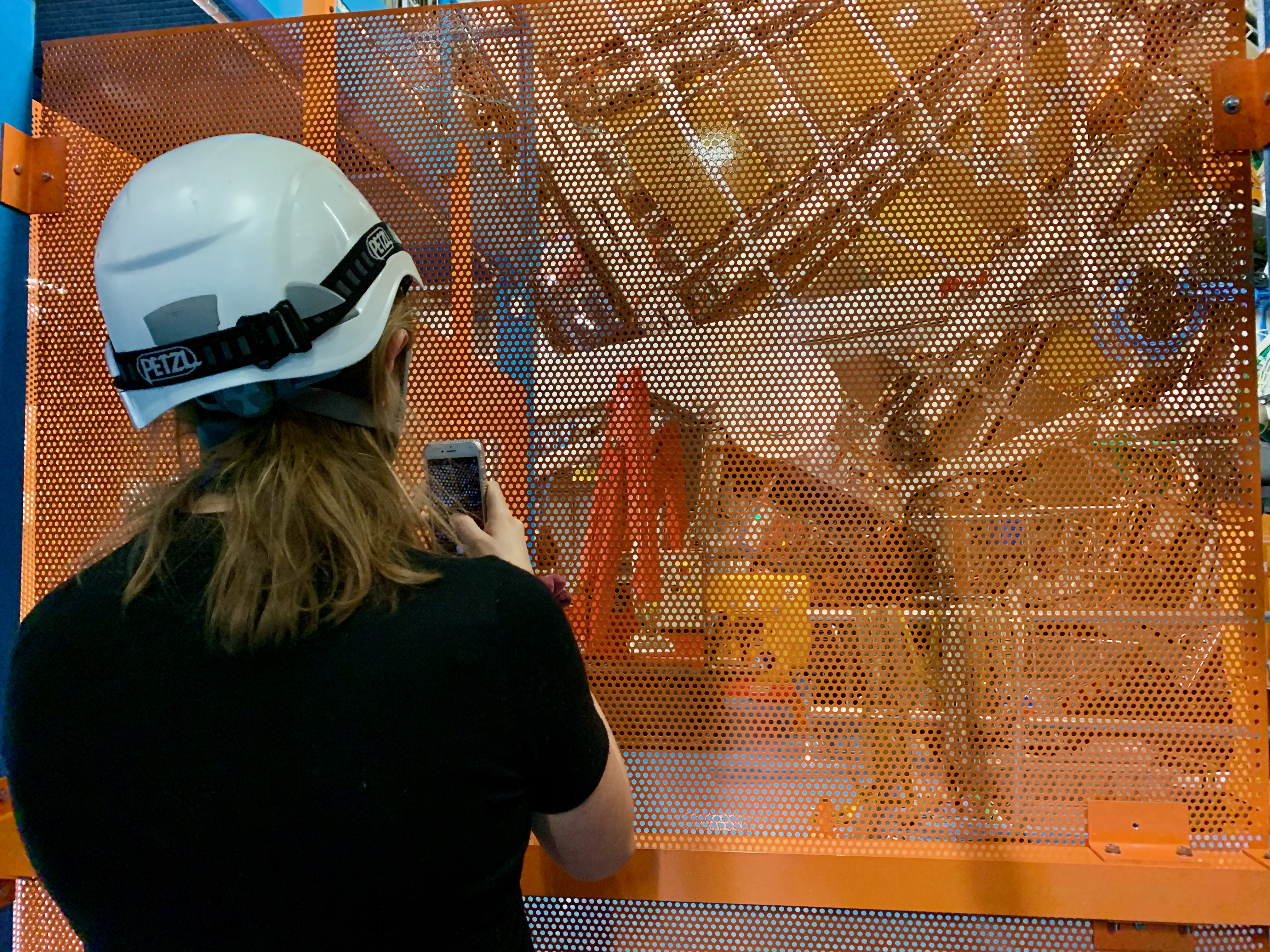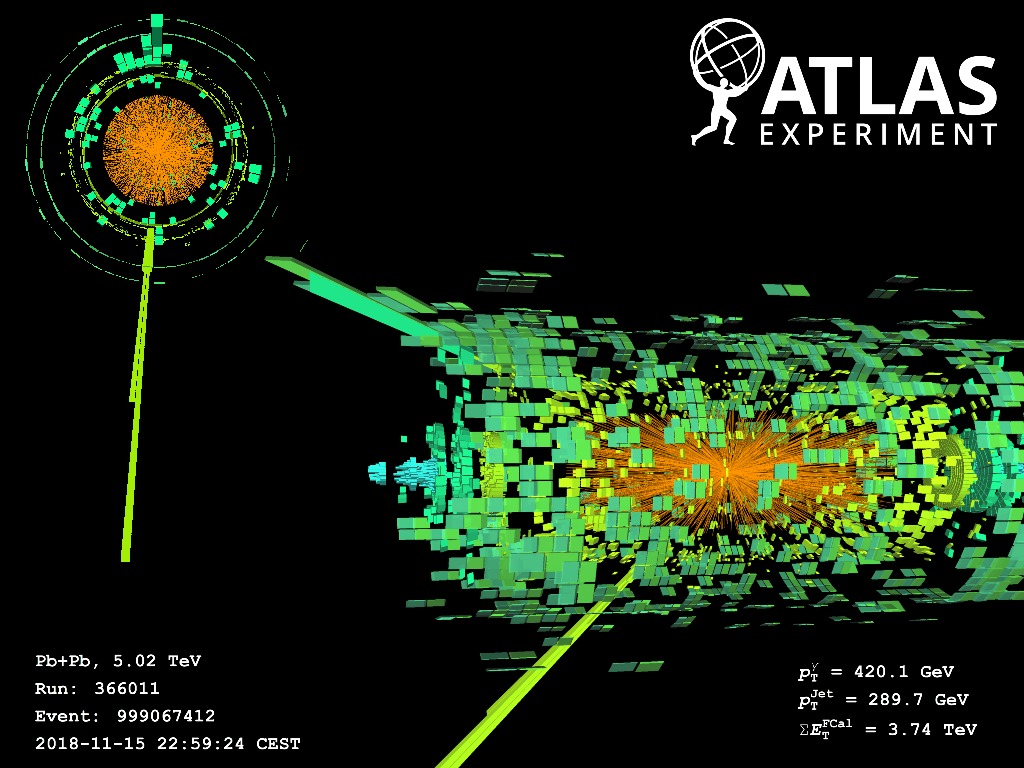Handing In the ATLAS Keys
8 December 2014 | By
After completing more than 250 work packages concerning the whole detector and experimental site, the ATLAS and CERN teams involved with Long Shutdown 1 (LS1) operations are now wrapping things up before starting the commissioning phase in preparation for the Large Hadron Collider's restart. The giant detector is now more efficient, safer and even greener than ever thanks to the huge amount of work carried out over the past two years.

Hundreds of people, more than 3000 certified interventions, huge and delicate parts of the detector completely refurbished: the ATLAS detector that will take data during Run 2 is a brand new machine, which will soon be back in the hands of the thousands of scientists who are preparing for the high-energy run of the LHC accelerator.
"During LS1, we have upgraded the detector's basic infrastructure and a few of its sub-detectors," explains Beniamino Di Girolamo, ATLAS Technical Coordinator. "The detector can now safely use more electrical power; it is better protected from unexpected power glitches, which used to cause downtime in our data-taking; it has more powerful refurbished cooling and ventilation systems as well as brand new aluminium beam pipes, replacing the old stainless steel pipes; and last but not least, we have improved our pixel detector with the insertion of a new innermost layer (IBL) and fixed some electrical and optoelectronic issues that were causing the other three pixel layers and disks – vital components of the tracking system – to degrade quickly."
Some upgrades have also been carried out to reduce the impact that ATLAS has on the environment. "The original inner detector cooling systems use fluorocarbons," says Di Girolamo. "We are now using CO2 for the IBL, which has a much lower greenhouse effect and allows us to significantly reduce the detector's ecological footprint in the event of leaks, and we have repaired existing leaks in the Muon Spectrometer chambers. Various sections of the beam pipes have also been replaced to reduce the use of materials that are easily activated in the experimental environment. This will simplify the decommissioning phases after the end of run."
After two years of hard work, the ATLAS teams are now completing their operations in the cavern before starting the commissioning of the whole detector. "We have just completed the very delicate phase of cleaning, which has to be done before turning the toroid on," says Di Girolamo. "The whole detector and the experimental cavern have been inspected over five days by dozens of ATLAS people, who searched for any minuscule metallic object left around the experiment during the work. We are now ready to enter the final commissioning phase."
See the photo essay [here].
The whole collaboration has started the countdown and looks forward to closing the detector in preparation for the start of the new run. But, yes, there is one drawback: the very popular experimental site, which has welcomed over 37,000 visitors in two years, will no longer be open to visits until the next long shutdown. That's the price to pay for doing physics!
(The article first appeared in the CERN Bulletin)



